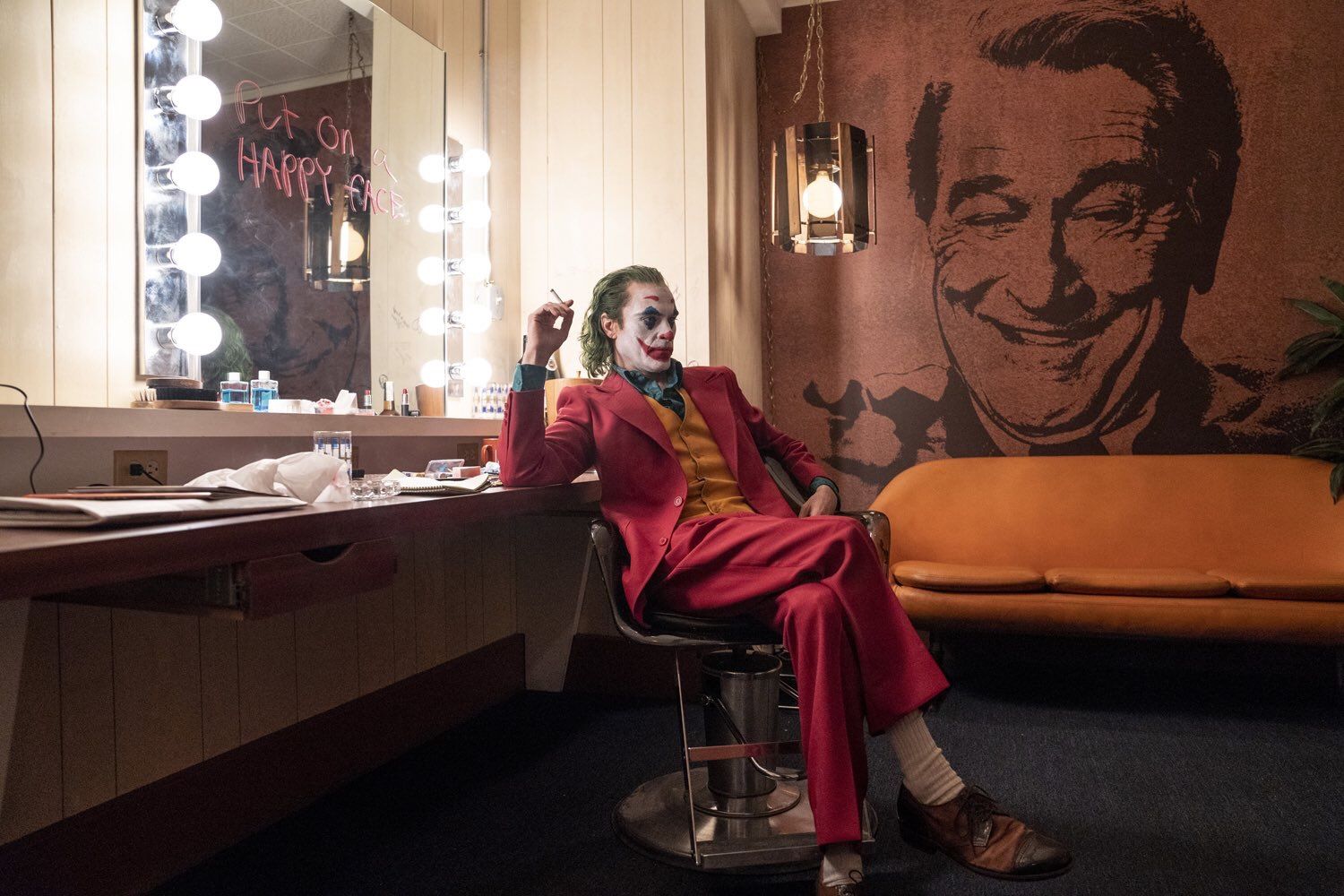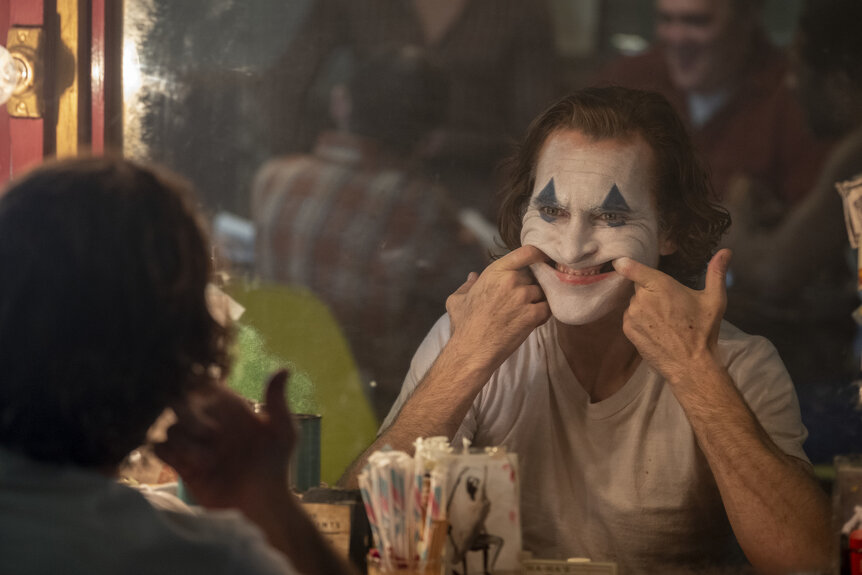Create a free profile to get unlimited access to exclusive videos, sweepstakes, and more!
Joaquin Phoenix and Todd Phillips explain finding Joker's laugh and disturbing dance moves

In Joker, the new archvillain origin story film, Joaquin Phoenix's Arthur Fleck descend into darkness as he goes from clown-for-hire to the clown prince of crime. If you've been worried about whether or not this film is divorced from the comics, as director Todd Phillips promised it would be not long ago, you can rest easy. It's not. Though Phillips says that this wasn't based on any single comic storyline, Joker is, indeed, set in the Batman universe.
"I've found that, as we've shown it to people, even when I just bring somebody into the editing room and show it to friend, a filmmaker friend, whoever, and you go, 'it's over'... they need time, a little bit to sort of process it," Phillips said at a recent post-screening Q&A in Los Angeles.
Fleck is an unreliable narrator, one who it's difficult to feel sympathy for, which takes a deft hand from both filmmaker and actor. Phoenix's physicality as Fleck is fascinating; his movements go from awkward and almost painful as he tries to fit into society to flowing and confident as he becomes who he really is. Phoenix says he worked with choreographer Michael Arnold for the dance on the steps we see in part in the trailer, but that he studied dancing videos on the Internet for the rest.
Phillips explained that Arthur has music in him, but "it was sort of kept in and trapped." A memorable scene that takes place in the bathroom, with Fleck dancing alone, wasn't in the script, but letting the cameras roll on Phoenix awkwardly grooving was an important addition. "That was just something that kind of evolved... this is a moment where we can sort of show that it's kind of fighting to get out."
The film takes place in the late '70s and early '80s, and though Phillips didn't have a set year in mind, the era accomplished one very important thing: "One reason was to separate it, quite frankly, from the DC Universe," he said. "When I pitched it to Warner Bros. and handed the script in, to sort of make clear that 'this isn't f***ing with anything you have going on.' This is like a separate universe... It takes place in the past before everything else."
Phillips added that the time period allowed for a more strenuous storyline and a sort of character study for the eponymous character. "You have to deal with f**king technology in movies," he says. "It's so frustrating. Like, if they have a cell phone, that gets solved, right?" Phillips and his collaborators tried to inject the film with that kind of realism all the way through, since, as he pointed out, "we were going basically on no CGI," which undoubtedly referred to big simulated superpowers, not the vital assistance that visual effects provide to all movies.
That's in contrast to the last time a Joker performance captured the world's attention. No one can help but think of Heath Ledger's performance as the Joker in 2008's The Dark Knight — though Joker is very different, these performances will likely stand side-by-side as incredibly individualistic interpretations of the same character.
In a way, this is exactly what you should expect from two different comic book films. There are dozens of different representations of the Joker in DC's comics, and while you might have favorites, they are all legitimate. Phoenix's performance is indeed transformative (not just in terms of the character's emotional state, but physically, as well), and often, roles and performances like this require personal sacrifice. Phoenix, however, says that wasn't the case for Joker.
"I know this is going to disappoint you," he said when asked how he got himself out of the role when the day was done. "I don't think I did. We had a good time."
Phillips added that, yes, that did laugh a lot, and Phoenix added, in jest, that they were really "f**ked up." He also explained that he and Phillips were in contact a lot during production: They'd arrive two hours before call, work side-by-side all day, go home and call each other only to hang up, text for a while, and then call each other again.
In the beginning, Phoenix admits, he didn't think he'd be able to take on the role. Phillips showed him some videos, though, and invited Phoenix to his house to work on the iconic Joker laugh before taking on the role.
"[Phillips] described the laugh as being almost painful," Phoenix said. "It was a really interesting way to describe laughter."
He says he tried for five minutes to work it out, and then Phillips told him he didn't have to do it right there because he already had the part. Phoenix insisted on doing it anyway, though he didn't formally accept the role. In fact, Phillips revealed that he only knew he had his Joker when he got a call saying Phoenix was there at a costume fitting.
Phillips spoke about some of the realities of the issues Arthur is dealing with, including medical ones. He says they did a ton of research about why you'd laugh uncontrollably and used it in the film. "The movie in every way tries to be grounded in reality as much as possible," Phillips said. "It still has a foot in the comic book world for sure, but we just kept thinking, let's put everything through a realistic lens. Like, why does he have a white face? Well, we're not going to drop him in acid. While it's amazing in the comic books, and Jack Nicholson and all... it doesn't feel very real that that would happen if you fell into a vat of acid. So let's come up with a realistic answer for everything."
We spoke to Phillips at a reception after the Q&A, and he did tell us that there are no plans for a sequel, though he said that if Phoenix came to him and said he wanted to do it, he'd consider it. He was laughing when he said it, so take that as you like.



























